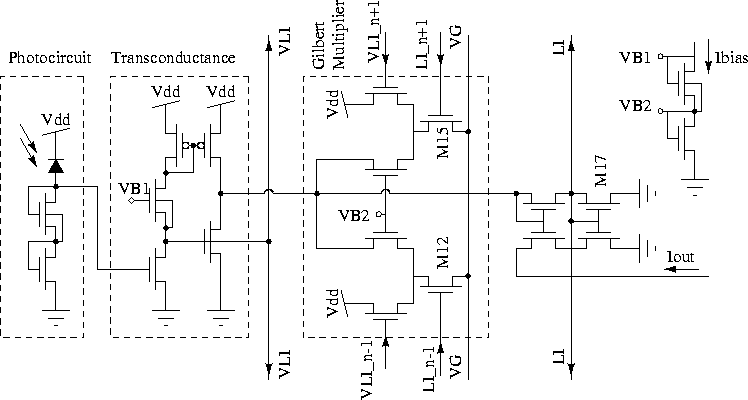``Lateral inhibition is one of the overlapping mechanisms used by many creatures to extend their visual capabilities without requiring additional processing by the brain'' [Nilson et al. 94]. In lateral inhibition a cell receives negative weights of the inputs of its neighbors. It has originally been developed as a model for biological vision, but it has formed a rigorous mathematical background over the years [Bouzerdoum and Pinter 91, Bouzerdoum et al. 92]. In shunting inhibition the negative weight from neighbors also contain a multiplicative factor of the output of its neighbors, i.e.
![]()
This vision chip designed by Nilson et al. implements a shunting inhibition network using current mode circuits. Current multiplication is performed by a four-quadrant Gilbert multiplier. The schematic of the cell is shown in Figure 2.25. VLI is the term proportional to the input, and LI is the term proportional to the output. The weight factor k is obtained by sizing the transistors M12 and M15 with respect to M17. The control voltage VG gives another degree of controllability over the weight factor because the source of M17 is connected to the GND node, but the source of M12 and M15 are connected to VG.
The designed chip which uses a 1.2 ![]() m p-well CMOS process has a
one-dimensional array with 24 cells.
m p-well CMOS process has a
one-dimensional array with 24 cells.

Figure 2.25: Nilson et al.'s shunting inhibition circuit.